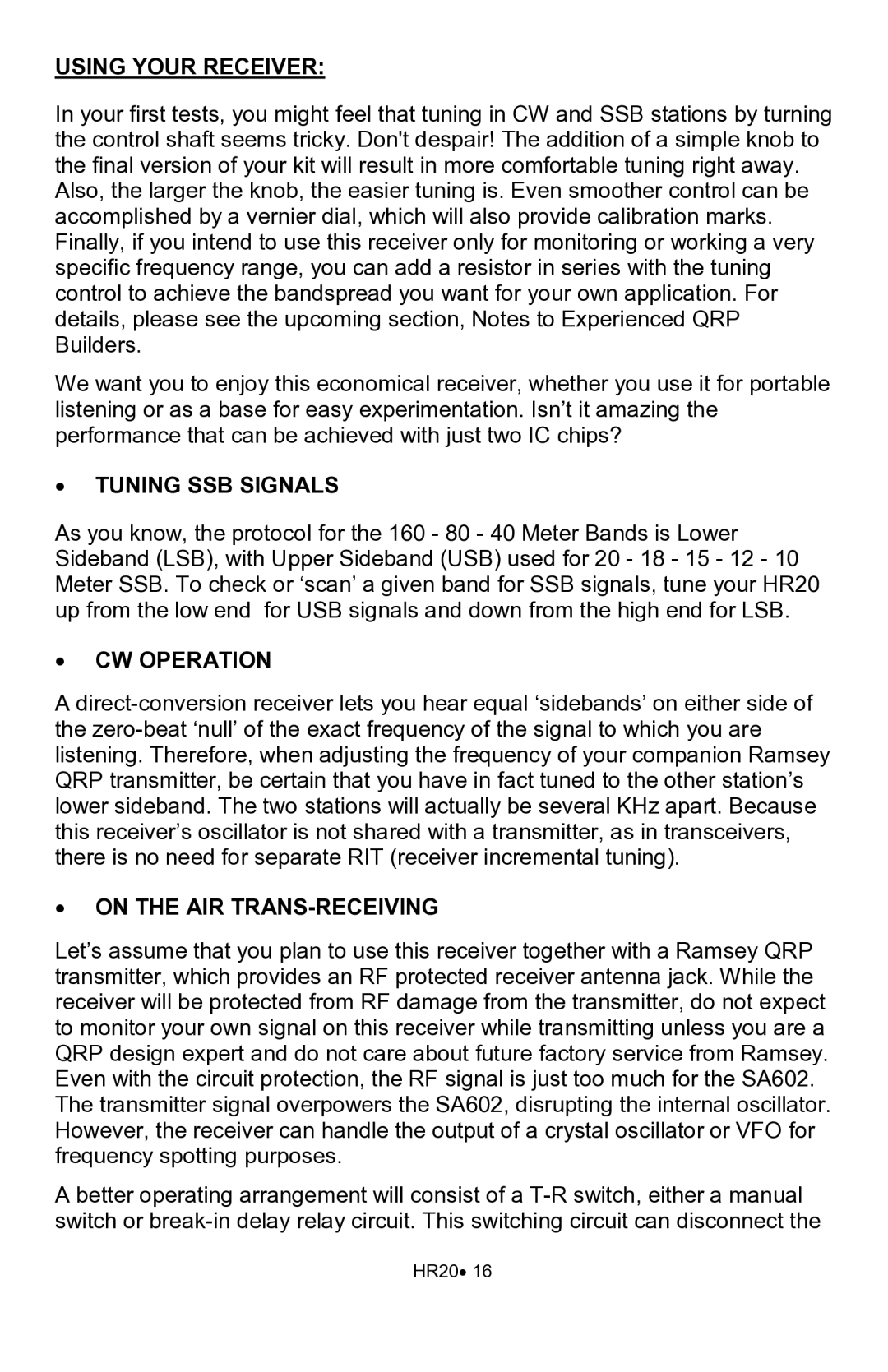USING YOUR RECEIVER:
In your first tests, you might feel that tuning in CW and SSB stations by turning the control shaft seems tricky. Don't despair! The addition of a simple knob to the final version of your kit will result in more comfortable tuning right away. Also, the larger the knob, the easier tuning is. Even smoother control can be accomplished by a vernier dial, which will also provide calibration marks. Finally, if you intend to use this receiver only for monitoring or working a very specific frequency range, you can add a resistor in series with the tuning control to achieve the bandspread you want for your own application. For details, please see the upcoming section, Notes to Experienced QRP Builders.
We want you to enjoy this economical receiver, whether you use it for portable listening or as a base for easy experimentation. Isn’t it amazing the performance that can be achieved with just two IC chips?
•TUNING SSB SIGNALS
As you know, the protocol for the 160 - 80 - 40 Meter Bands is Lower Sideband (LSB), with Upper Sideband (USB) used for 20 - 18 - 15 - 12 - 10 Meter SSB. To check or ‘scan’ a given band for SSB signals, tune your HR20 up from the low end for USB signals and down from the high end for LSB.
•CW OPERATION
A
•ON THE AIR TRANS-RECEIVING
Let’s assume that you plan to use this receiver together with a Ramsey QRP transmitter, which provides an RF protected receiver antenna jack. While the receiver will be protected from RF damage from the transmitter, do not expect to monitor your own signal on this receiver while transmitting unless you are a QRP design expert and do not care about future factory service from Ramsey. Even with the circuit protection, the RF signal is just too much for the SA602.
The transmitter signal overpowers the SA602, disrupting the internal oscillator. However, the receiver can handle the output of a crystal oscillator or VFO for frequency spotting purposes.
A better operating arrangement will consist of a
